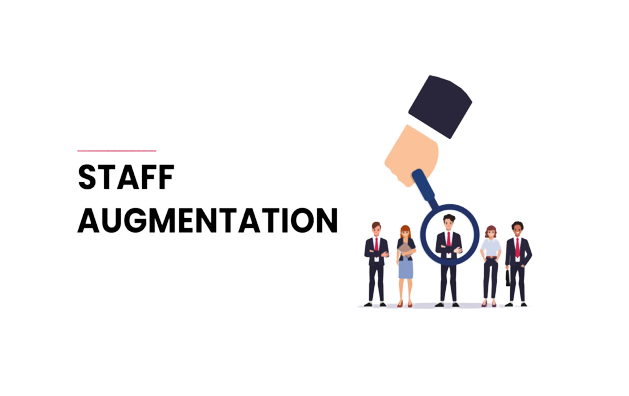Staff augmentation is a business strategy in which a company hires external personnel to supplement its in-house team for a specific project or duration. This approach allows a company to scale up its workforce quickly, cost-effectively, and with minimal risk, without the need to invest in recruitment, training, and other HR-related activities.
In today’s fast-paced business environment, digital transformation is essential for companies to stay competitive. However, digital transformation is not an easy process, and many organizations struggle to find the right talent to support their digital initiatives. This is where staff augmentation comes in as a valuable solution. In this blog post, we will explore the role of staff augmentation in digital transformation, as well as the opportunities and challenges it presents.
Introduction
Digital transformation is essential for companies to adapt to the changing business landscape. However, finding the right talent to support these initiatives can be challenging. Staff augmentation provides a flexible and cost-effective solution to support digital transformation efforts.
What is Staff Augmentation?
Staff augmentation is a business strategy in which a company hires external personnel to supplement its in-house team for a specific project or duration. This approach allows a company to scale up its workforce quickly, cost-effectively, and with minimal risk, without the need to invest in recruitment, training, and other HR-related activities.
In this, the external personnel, also known as contractors or consultants, work under the direction and supervision of the company’s management team, who retain full control over the project’s scope, timelines, and deliverables. The contractors are responsible for providing their tools, equipment, and expertise to complete the project, while the company provides the necessary resources and infrastructure to support them.
It is a flexible and efficient solution for companies that need to expand their capabilities, manage workload peaks, or fill skills gaps without committing to long-term hires or incurring overhead costs. It is commonly used in IT, software development, engineering, marketing, and other industries that require specialized skills and expertise.

Staff Augmentation
The Role of Staff Augmentation in Digital Transformation
Digital transformation requires a range of skills and expertise, including data analytics, cloud computing, and cybersecurity. Staff augmentation can provide access to these skills and expertise, allowing companies to execute their digital transformation initiatives more efficiently.
Opportunities Presented by Staff Augmentation in Digital Transformation
It presents several opportunities for companies undergoing digital transformation, such as:
- Increased Flexibility: It provides companies with the flexibility to scale their workforce up or down depending on their needs.
- Access to Specialized Skills: It allows companies to access specialized skills and expertise that may not be available in-house.
- Reduced Hiring Costs: It can be a cost-effective solution compared to traditional hiring, as it eliminates the need for onboarding and training new employees.
- Improved Time to Market: It can help companies execute their digital transformation initiatives more quickly and efficiently, leading to faster time to market.
Challenges Presented by Staff Augmentation in Digital Transformation
While it presents several opportunities, also presents some challenges, such as:
- Integration with Existing Teams: Temporary staff may have trouble integrating with existing teams. And may require additional support to ensure successful collaboration.
- Limited Control over Temporary Staff: Companies may have limited control over temporary staff, which can lead to challenges in managing workflows and ensuring quality control.
- Communication: Communication can be a challenge when working with temporary staff. As they may not be as familiar with the company’s culture and processes.
- Data Security: Temporary staff may require access to sensitive data, which can present data security risks if not managed properly.
Best Practices for Overcoming Staff Augmentation Challenges
To ensure successful staff augmentation in digital transformation, companies should follow these best practices:
- Clearly Define Requirements and Expectations: Clearly defining requirements and expectations can help minimize integration challenges and ensure successful collaboration.
- Choose the Right Staff Augmentation Partner: Choosing the right partner is critical to the success of staff augmentation. Look for a partner with a track record of success and a deep understanding of your industry and business needs.
- Maintain Open Communication: Communication is key to successful staff augmentation. Maintain open lines of communication with your partner and temporary staff. And ensure everyone is clear on their roles and responsibilities.
- Ensure Cultural Fit: It’s important to ensure that temporary staff is a good cultural fit with your organization to minimize integration challenges and ensure successful collaboration.
- Prioritize Data Securit: To ensure data security, companies should implement policies and procedures to manage access to sensitive data and provide appropriate training to temporary staff on data security protocols.
Conclusion
Staff augmentation presents several opportunities for companies undergoing digital transformation. By following best practices and strategies, companies can overcome the challenges presented above. And maximize the benefits of this flexible and cost-effective approach to staffing. It’s important to choose the right partner and maintain open communication. Ensure that your temporary staff is aligned with your goals and culture. Additionally, companies should have a clear understanding of their requirements and expectations, and establish clear roles and responsibilities. By taking these steps, companies can leverage the power of staff augmentation to drive digital transformation. And stay competitive in a rapidly changing business landscape.
BACK










